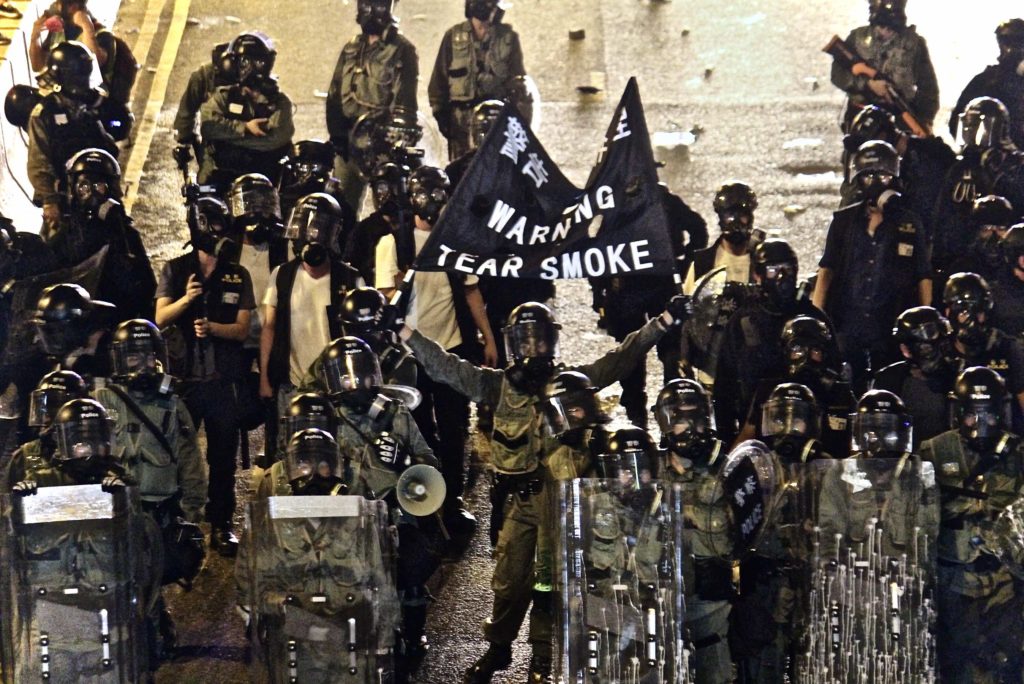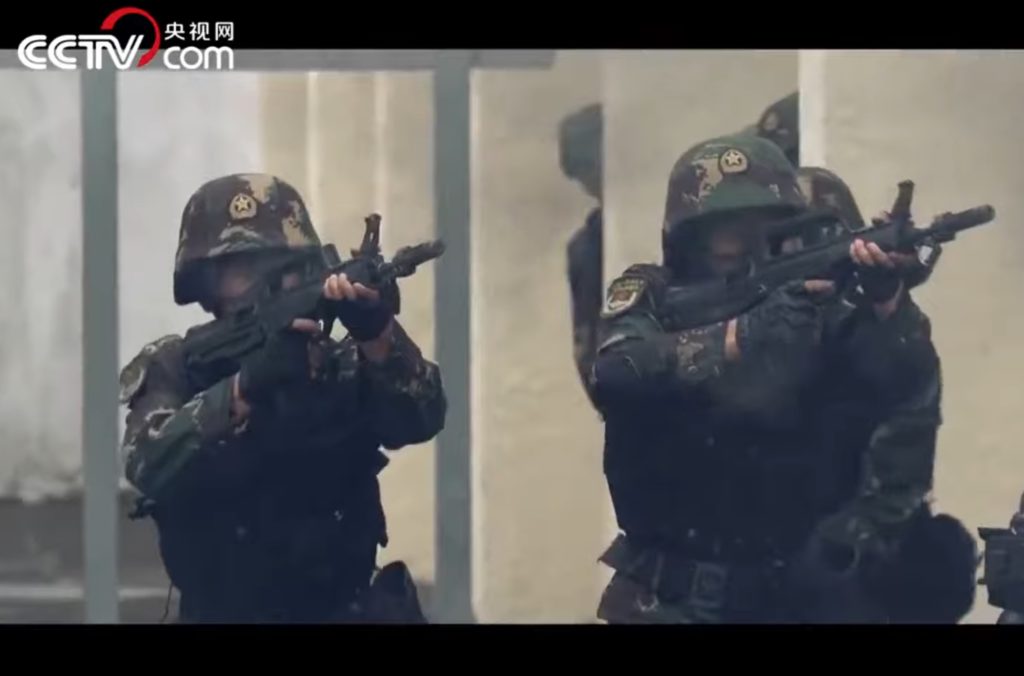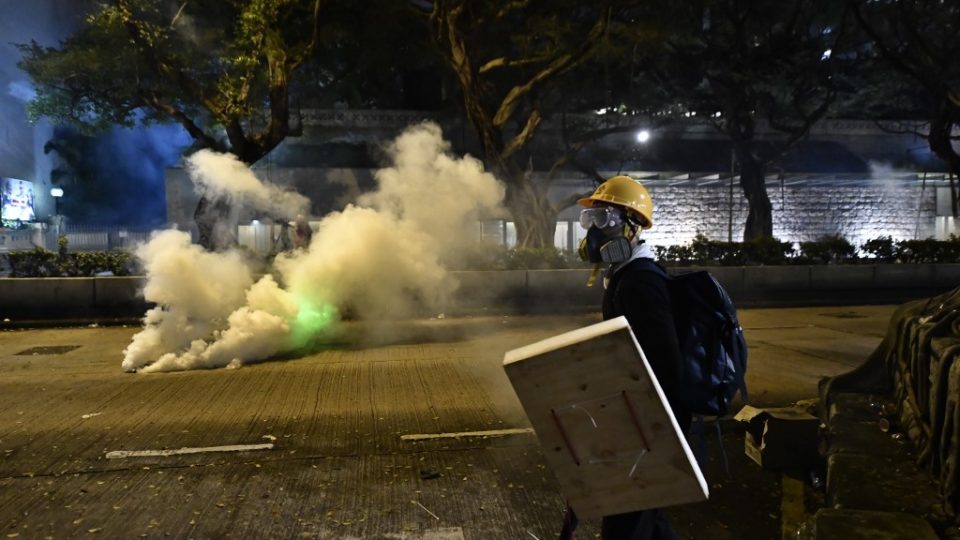Two months after a summer of rage began on Hong Kong’s streets, pro-democracy protesters and the southern Chinese city’s leaders are digging in for a long war of attrition.
What began as a mass display of focused opposition to a planned extradition bill has, over nine consecutive weekends of increasingly violent clashes with police, evolved into something deeper, wider, and far angrier.
The streets of the city have become frequent battlegrounds, filled with acrid clouds of tear gas and littered with rubber bullet casings.
The protesters have adopted tactics and wider pro-democracy demands that present an unprecedented challenge to the city’s ultimate rulers in Beijing.
Chinese authorities have responded with ever-stronger warnings, yet each time the protesters have simply doubled-down.
They have stormed the Hong Kong legislature, laid siege to police stations, disrupted the transport network, and staged multiple, simultaneous demonstrations that have stretched the capacity of the local police to its limits.
Tear gas in Admiralty. Maybe that's what Carrie Lam meant when she said the government would be "resolute in maintaining law and order." #HongKong #antiELAB #HKstrike pic.twitter.com/YiIsO1SBFe
— Coconuts Hong Kong (@CoconutsHK) August 5, 2019
“We have to keep hitting the streets, we have to keep fighting, we have no choice,” one protester, who gave her surname as Lo, told AFP as crowds pelted a police station with rocks on Monday night during the most widespread day of unrest since the crisis began.
“None of our demands have been met, the government is refusing to listen to the people.”
Revolutionary chants
When brief clashes between police and protesters first erupted on June 9 after a huge, peaceful protest march, few could have predicted that a city renowned for safety and stability could unravel so quickly.
Back then the protests were sparked by a hugely unpopular — and now postponed — plan to allow extraditions to the Chinese mainland.
The most commonly heard chant was “chit wui” (withdraw), a reference to the loathed bill.
Now the most popular chant is a rallying cry first used by a now jailed independence activist: “Liberate Hong Kong, revolution of our time!”
It is shouted outside courtrooms as protesters appear in the dock, during rallies and clashes with police. And it is sprayed onto walls across the city.

Another popular graffiti tag is: “You taught us peaceful marches were useless.”
City leader Carrie Lam — who was appointed by a pro-Beijing committee — has shown little appetite for compromise.
Beyond agreeing to postpone the extradition bill, she has resisted calls for her resignation, an amnesty for those arrested or an independent inquiry.
On Monday, in her most forceful comments yet, Lam condemned the protesters and said their new revolutionary chant showed they were “trying to destroy Hong Kong.”
No endgame
With the violence escalating, Beijing has thrown its full-throated support behind Lam and the city’s police.
In its harshest warning yet to the protesters, Beijing warned on Tuesday that “those who play with fire will perish by it”, and not to mistake its restraint so far for weakness.
Analysts say further clashes are inevitable in the coming weeks and months.
“The confrontation between protesters and police will escalate,” said Hong Kong-based political analyst Willy Lam, adding it was “difficult to anticipate the endgame.”
He said protests would likely end if Beijing either allowed Lam to make some concessions — such as an inquiry and her resignation — or sent in reinforcements, either mainland police officers or the military.

But Chinese President Xi Jinping is hesitant to do either at the moment, both of which carry significant reputational risks.
Either Xi is seen as weak for giving in to the protesters, or too violent for deploying mainland security forces.
Those options are particularly unpalatable now as Xi does not want to take the shine off celebrations for the 70th anniversary of the People Republic of China in early October, according to Lam.
Waiting game
Many believe Beijing is playing a waiting game, hoping the increasingly violent actions taken by more hardcore protesters will damage the movement.
A similar wait-and-see tactic — accompanied by the pressure and intimidation of arresting leaders — worked during the two-month 2014 pro-democracy protests known as the “Umbrella Movement”.
“As the movement lingered, a large portion of the population was against them as people’s everyday life was disrupted without any prospect of concessions from Beijing,” said Lam.
But 2019’s protests feel more existential to many Hong Kong protesters, who say freedoms have slid even further since Beijing successfully faced down the Umbrella Movement.
As the protester Lo made her way back home on Monday night, she was adamant the movement would not lose steam.
“Days, weeks, months, if needs,” she said when asked how long she was willing to continue. “What choice to we have?”




